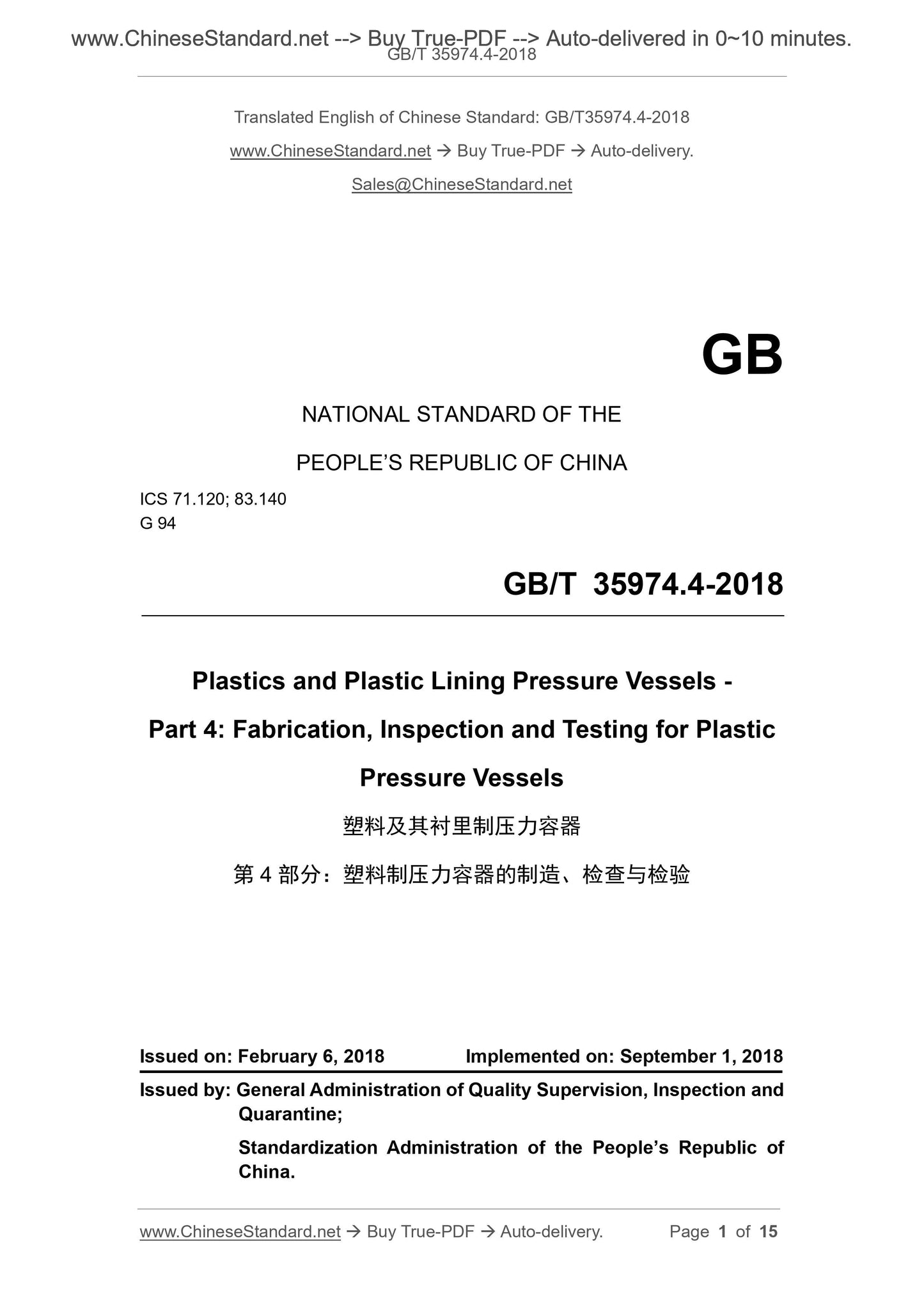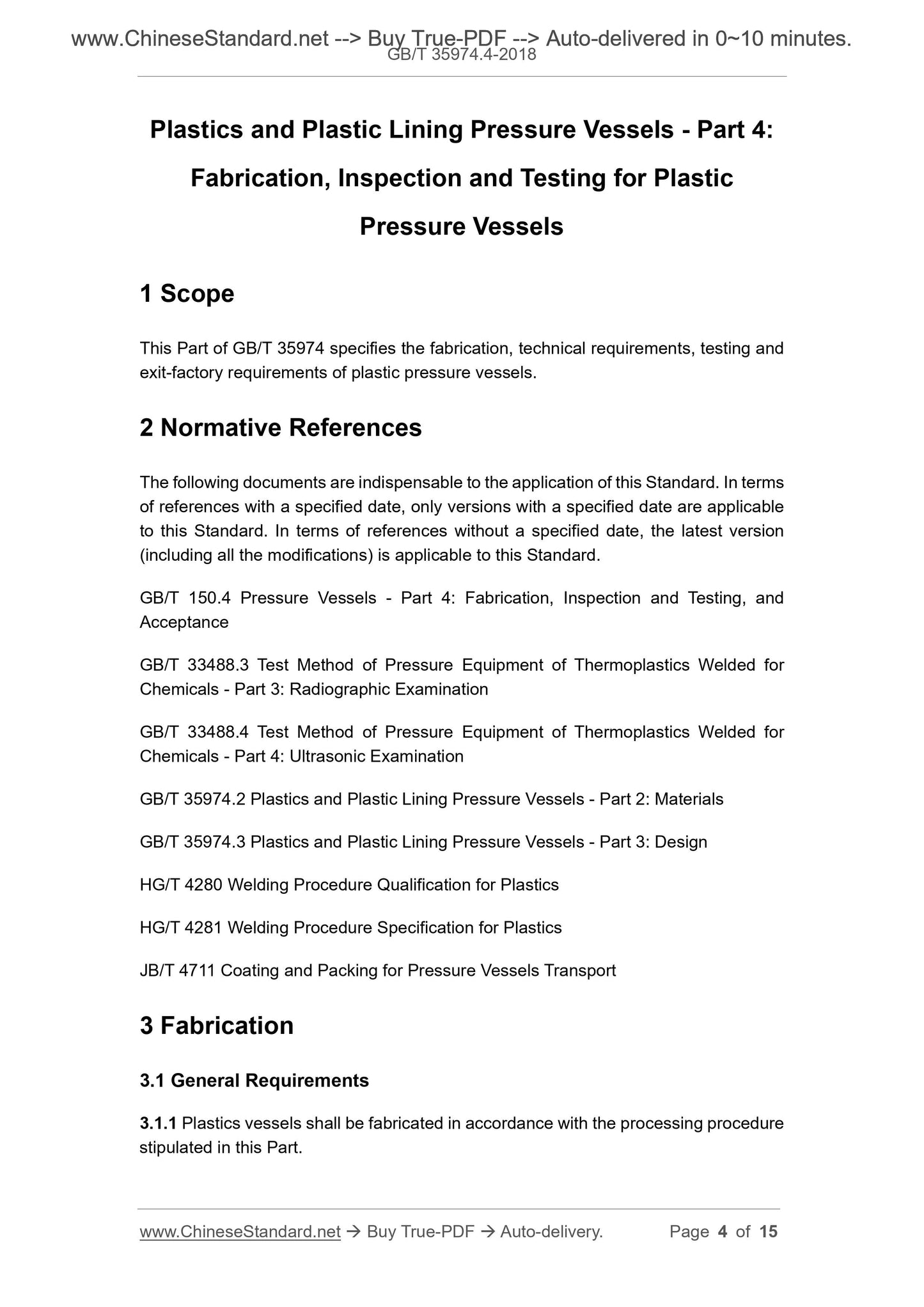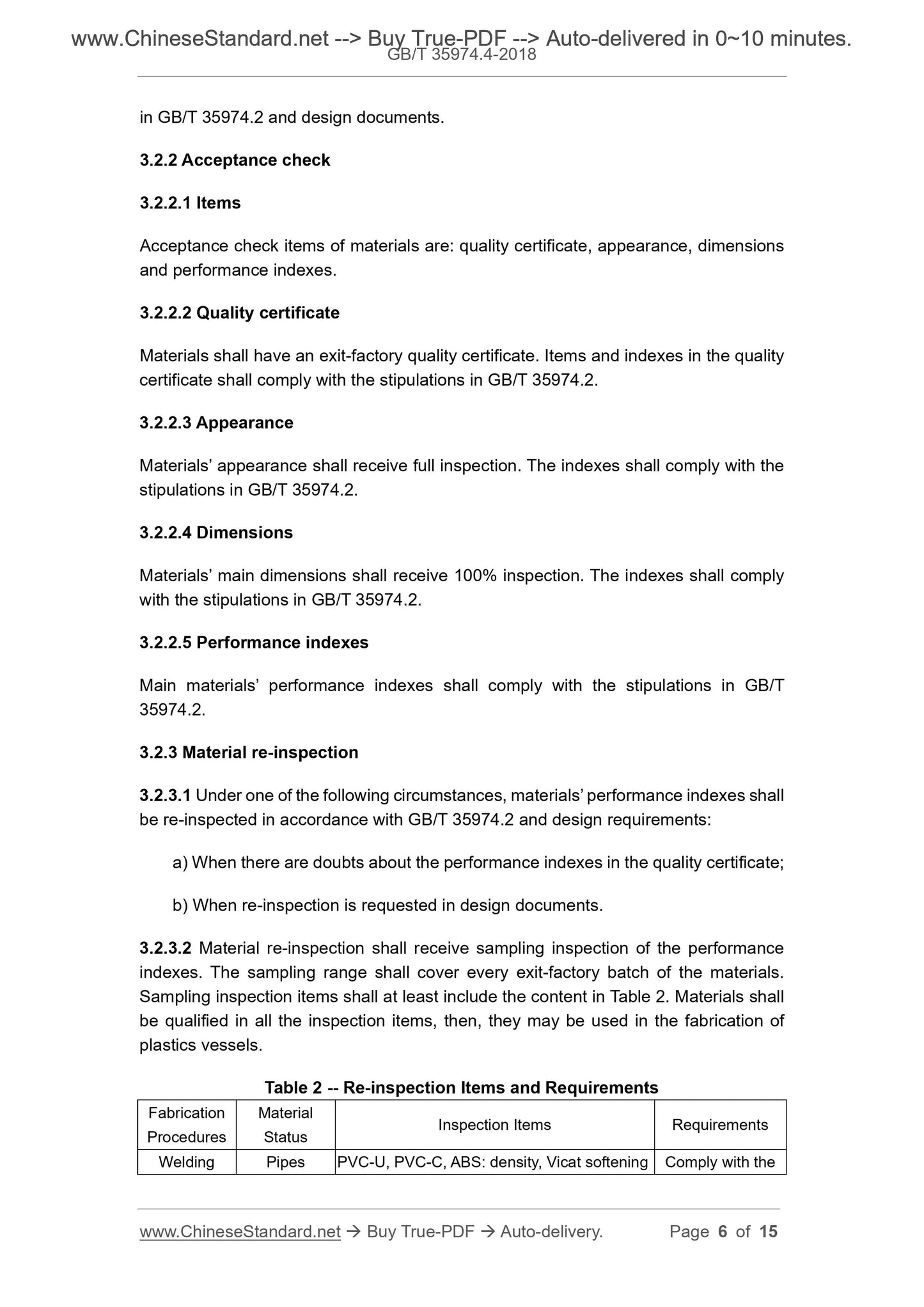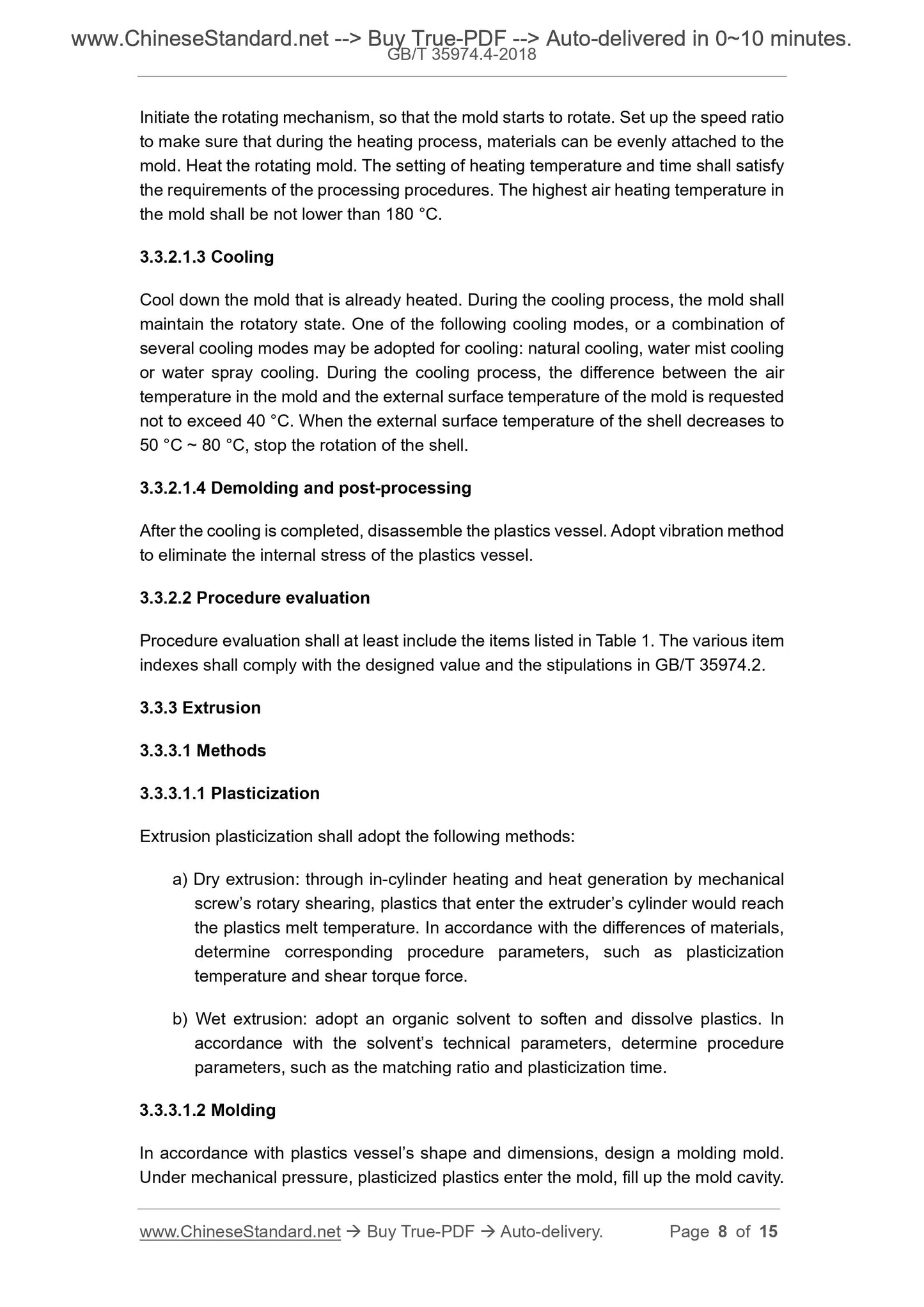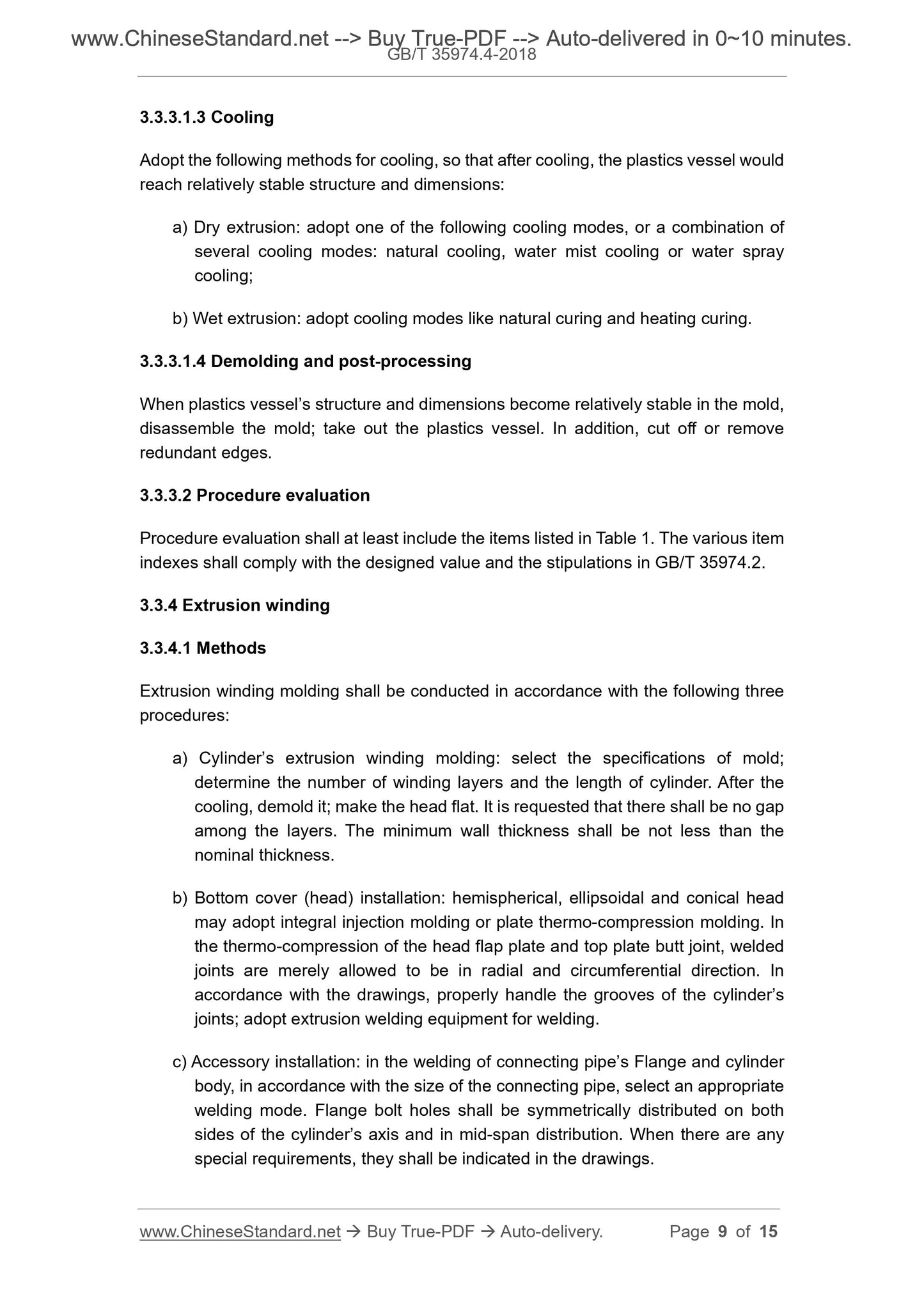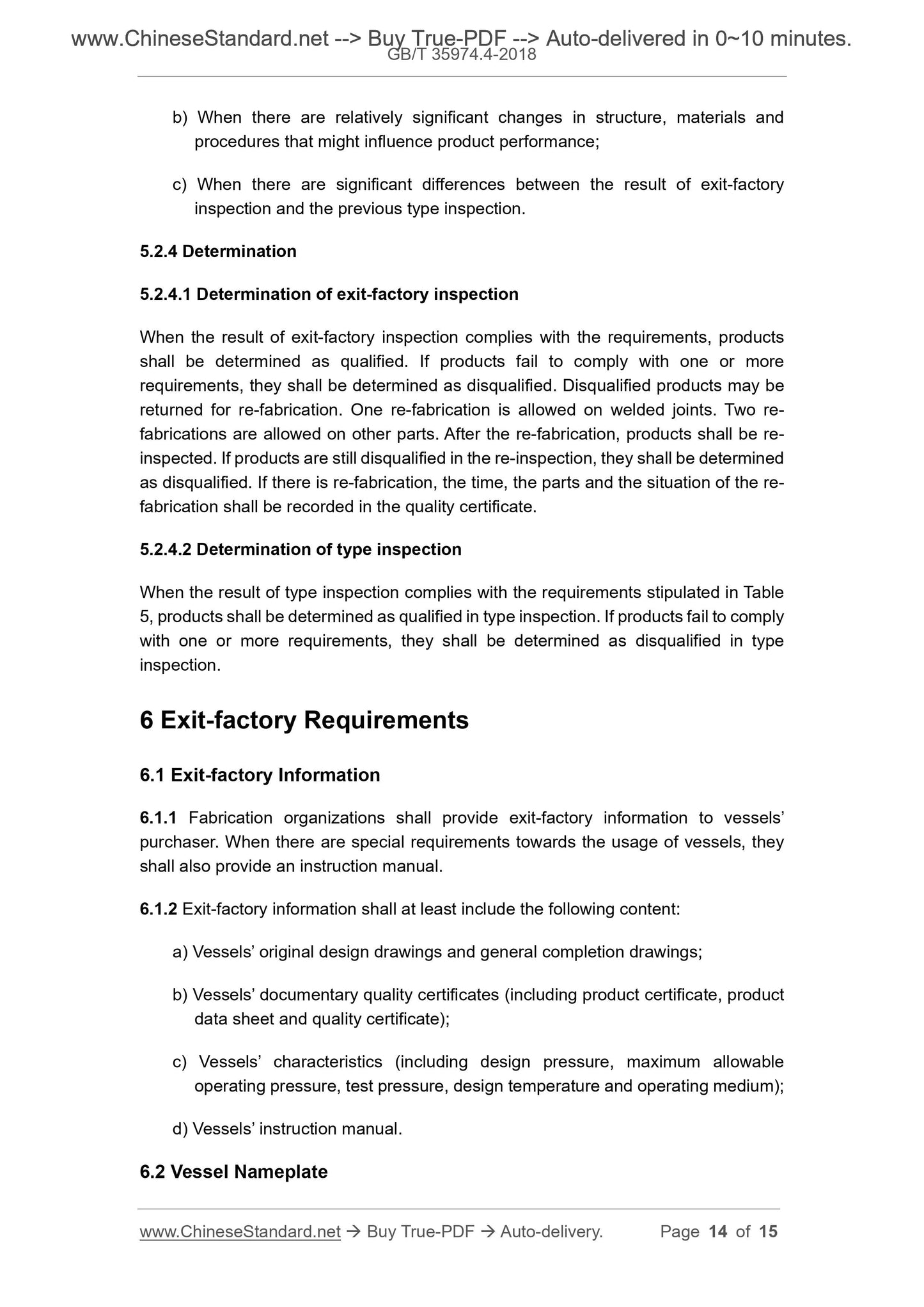1
/
of
7
www.ChineseStandard.us -- Field Test Asia Pte. Ltd.
GB/T 35974.4-2018 English PDF (GB/T35974.4-2018)
GB/T 35974.4-2018 English PDF (GB/T35974.4-2018)
Regular price
$160.00
Regular price
Sale price
$160.00
Unit price
/
per
Shipping calculated at checkout.
Couldn't load pickup availability
GB/T 35974.4-2018: Plastics and Plastic Lining Pressure Vessels - Part 4: Fabrication, Inspection and Testing for Plastic Pressure Vessels
Delivery: 9 seconds. Download (and Email) true-PDF + Invoice.Get Quotation: Click GB/T 35974.4-2018 (Self-service in 1-minute)
Newer / historical versions: GB/T 35974.4-2018
Preview True-PDF
Scope
This Part of GB/T 35974 specifies the fabrication, technical requirements, testing andexit-factory requirements of plastic pressure vessels.
Basic Data
| Standard ID | GB/T 35974.4-2018 (GB/T35974.4-2018) |
| Description (Translated English) | Plastics and Plastic Lining Pressure Vessels - Part 4: Fabrication, Inspection and Testing for Plastic Pressure Vessels |
| Sector / Industry | National Standard (Recommended) |
| Classification of Chinese Standard | G94 |
| Classification of International Standard | 71.120; 83.140 |
| Word Count Estimation | 14,176 |
| Date of Issue | 2018-02-06 |
| Date of Implementation | 2018-09-01 |
| Issuing agency(ies) | State Administration for Market Regulation, China National Standardization Administration |
Share
